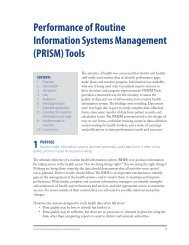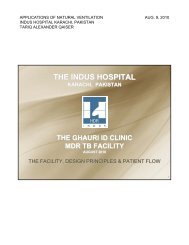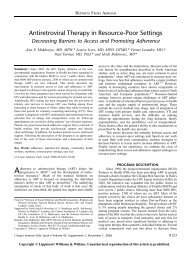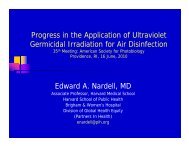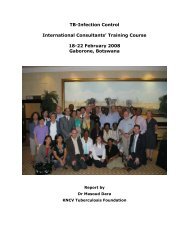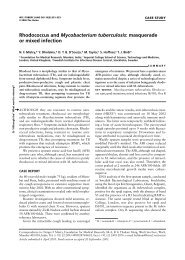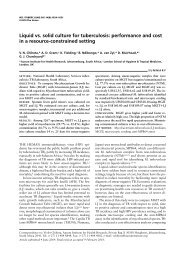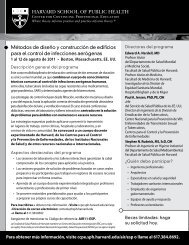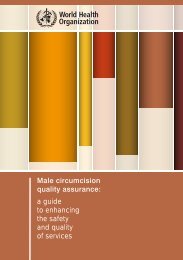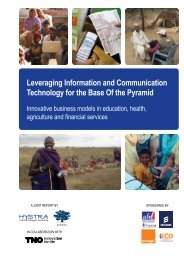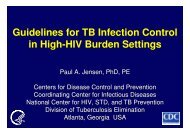THE ARTEMISININ ENTERPRISE - GHDonline
THE ARTEMISININ ENTERPRISE - GHDonline
THE ARTEMISININ ENTERPRISE - GHDonline
Create successful ePaper yourself
Turn your PDF publications into a flip-book with our unique Google optimized e-Paper software.
was the most appropriate drug treatment to be used ‐ but it had a prohibitively high price.<br />
In 2001, AL was added to the WHO Essential Medicines List, and Novartis and the WHO<br />
reached an agreement in which Novartis would supply AL at cost to the public sectors of<br />
malaria endemic countries to improve access to this life‐saving ACT. Both of these key<br />
decisions were influenced by the Millennium Development Goals (MDGs) which, among<br />
other objectives, emphasised improved access to the most effective antimalarial treatments.<br />
In April 2002, the WHO recommended ACTs as first‐line treatment for uncomplicated<br />
P. falciparum malaria in chloroquine‐ and SP‐resistant geographical regions. The ACTs<br />
currently recommended by the WHO are AL, artesunate/amodiaquine (AS/AQ), artesunate/<br />
sulfadoxine‐pyrimethamine (AS/SP), and artesunate/mefloquine (AS/MQ).<br />
Regulating quality of artemisinin and ACTs<br />
Given the potential risk of developing resistance to ACTs, the malaria community is taking<br />
the necessary precautions to prolong the efficacy of this drug class. These measures include:<br />
(i) use of co‐formulated drugs to ensure patients consume combination treatments only; (ii)<br />
removal of monotherapies and ineffective drugs from the market; and (iii) ensuring<br />
countries and donors purchase and finance only high quality ACTs that meet international<br />
quality standards.<br />
Ensuring the quality of artemisinin and ACTs is one of the major challenges facing effective<br />
malaria control. To address the quality issue, major international funding agencies (eg<br />
Global Fund, President’s Malaria Initiative) have established policies to purchase drugs that<br />
meet internationally accepted quality standards, such as ACTs that have been prequalified<br />
by WHO and stringent regulatory authorities, with some caveats and exceptions.<br />
Artemisia Cultivation<br />
ACTs are unusual in the pharmaceutical industry because they are the only high volume<br />
product ‐ with sales of more than 100 million treatments annually ‐ that continue to contain<br />
a natural product derived from plants. Agriculture provides many high‐volume<br />
commodity food and non‐food products from the cultivation of established crops that have<br />
benefited from many years of plant breeding. In contrast, Artemisia annua, the medicinal<br />
plant producing artemisinin for ACT manufacture, has undergone a very short period of<br />
plant breeding for improved yield and robust agronomy, despite its importance for ACT<br />
production.<br />
Artemisia annua is native to China and is able to grow in many different climates including<br />
high altitude temperate areas in China, Vietnam and East Africa. China and Vietnam<br />
produce some 70% of the global supply of artemisinin, with East Africa producing 20%.<br />
Other countries in which Artemisia annua is grown include India, Ghana, Kenya, Tanzania,<br />
Uganda, Nigeria, Mozambique, Madagascar and Brazil.<br />
24



